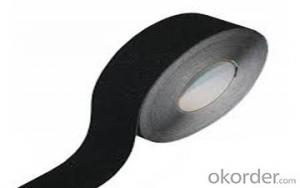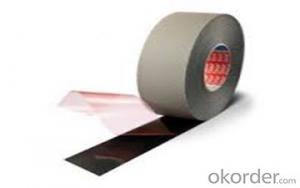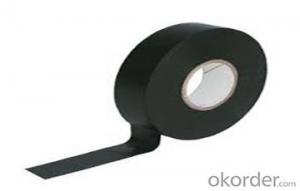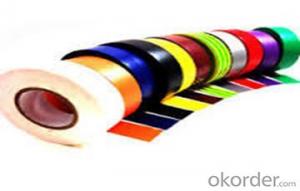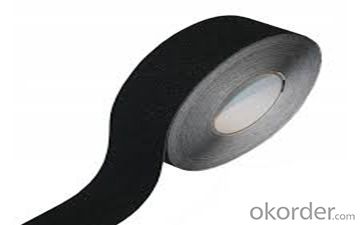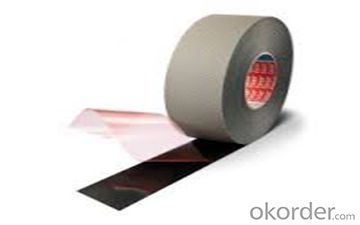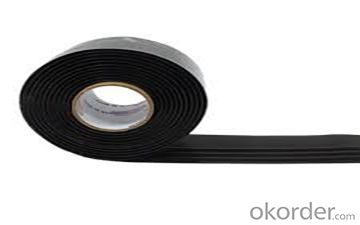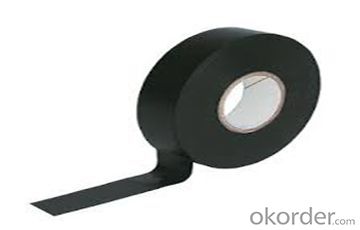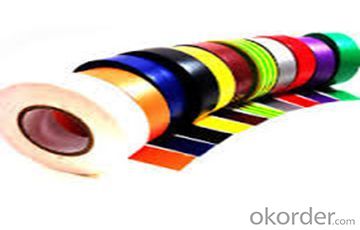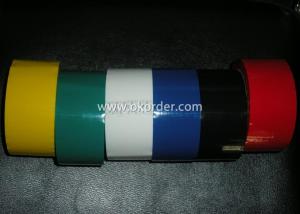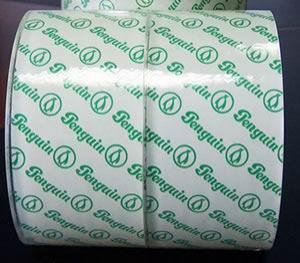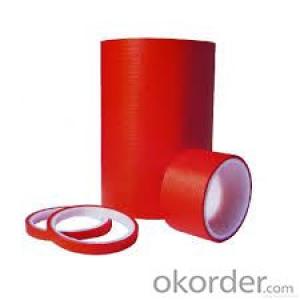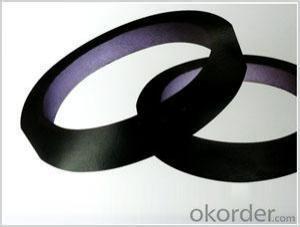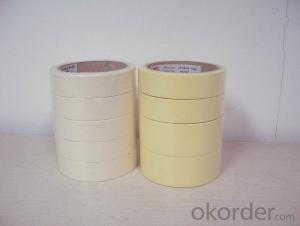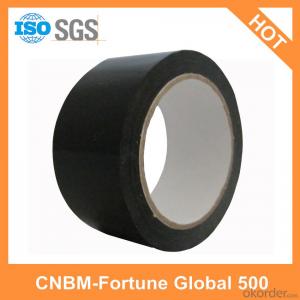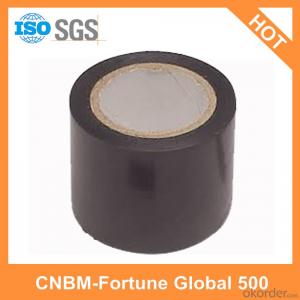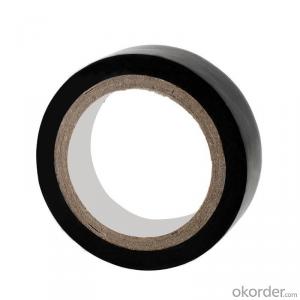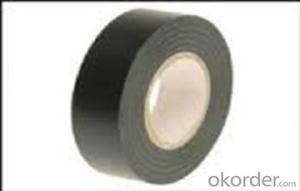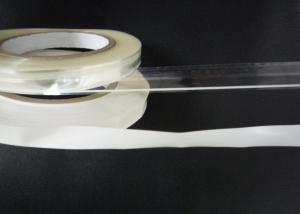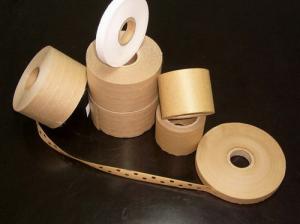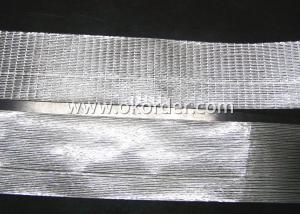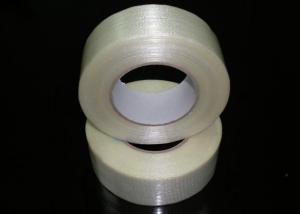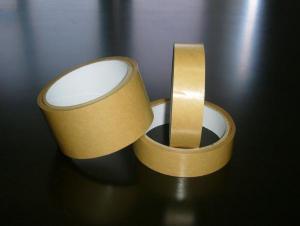UPS Packaging Tape - PVC Electrical Black Heat-Resistant Insulation Foam Adhesive Tape
- Loading Port:
- Tianjin
- Payment Terms:
- TT OR LC
- Min Order Qty:
- 1000 m
- Supply Capability:
- 500000 m/month
OKorder Service Pledge
OKorder Financial Service
You Might Also Like
1.Product Details
| Specification | any size ,as per your requeste |
| Material | Nitrile Butadiene Rubber,Adhesive,Releasing Paper |
| Product Color | black |
| Packing | Bulk or 1 roll of NBR single sided foam tape in a pp bag |
| Package | Packing in Strong PP bags Or Carton , usually 30-40 Roll /carton |
2.Picture presentation

3.Why choose us:
China National Building Material Group Corporation(CNBM), estiblished in 1984, as the largest group corporation of building materials in China. It ranked the 267th among the global FORTUNE 500 CORPORATIONS. And it's a China state-owned enterprise, ranked the 143 large-scale groups under the administration of the state-owned Assets supervision and administration commission of the state council.
With thelargest geosynthetics base about 667000m2 in China and have about 120production lines for all geo materials. For geotextile, our production capacity each day can be 300,000m2. We warmly welcome your order and visit. CNBM guarantee good quality and serivce with comptetitive prices.
4.Our service
(1)24 hours prompt reply by email or telephone or messenger.
(2)Standard size have stock, immediately delivery once your purchase
(3)10 days delivery containers for out of stock
(4)Can combine containers with multiple insulation products for your different demand
(5)No quantity limit, from 1 rolls to full container, at your choose and demand!
5.FAQ
1.Q:What's your payment terms?
A:L/C
2.Q:When could you send me the samples
A:2-3days
3.Q:Can I customize the strip length?
A: Yes
4.Q:Do you also sell other kinds led lights?
A:Yes, we also supply PVC tape, Warning tape, Fiberglass tape, Kraft adhesive tape, Aluminum Foil Tape, Foam double side adhesive tape etc.
- Q: Can packaging tape be used for sealing PVC pipes?
- Using packaging tape to seal PVC pipes is not recommended. PVC pipes need a specialized sealant that can bond with the PVC material and create a tight seal to prevent water leakage. Packaging tape is not suitable for this task and may not offer a reliable and durable seal. To ensure a proper and long-lasting seal, it is advised to use sealants or plumber's tape specifically designed for PVC pipes.
- Q: How about the price of tape?
- Tape? A wide range, and you ask, how much is a bottle of drinks?. Ask for detailed answers
- Q: How do I prevent packaging tape from losing its color over time?
- To prevent packaging tape from losing its color over time, here are a few strategies you can try: 1. Store the tape properly: Exposure to sunlight and extreme temperatures can cause the color to fade quickly. Keep your packaging tape in a cool, dark, and dry place to maintain its color for longer. 2. Avoid direct contact with moisture: Moisture can be detrimental to the adhesive and color of the tape. Make sure to store it away from areas prone to water leaks or high humidity levels. 3. Choose high-quality tape: Some packaging tapes are made with better quality materials that are less likely to lose their color. Look for tapes that are specifically designed for long-lasting color retention. 4. Limit exposure to air: Oxygen can also contribute to the degradation of color. After use, make sure to seal the packaging tape tightly to minimize its exposure to air. 5. Handle with care during use: Rough handling can cause the color to rub off or fade faster. Be gentle when applying and removing the tape to maintain its original color. 6. Consider using protective coatings: If the packaging tape is essential for branding purposes or aesthetic appeal, you can explore using protective coatings or laminates. These coatings can provide an additional layer of protection to prevent color loss. By implementing these measures, you can extend the lifespan and color vibrancy of your packaging tape, ensuring it remains visually appealing for a longer period.
- Q: Does packaging tape have a specific adhesive strength?
- Yes, packaging tape does have a specific adhesive strength. The adhesive strength of packaging tape refers to how well it sticks to surfaces. This strength is typically measured in ounces per inch (oz/in) or pounds per inch (lb/in). The adhesive strength of packaging tape is determined by various factors, such as the type of adhesive used, the thickness of the tape, and the quality of the backing material. Different types of packaging tape may have different adhesive strengths to cater to specific needs, such as lightweight packages or heavy-duty shipments. It is important to consider the intended use and the weight of the package when choosing packaging tape with the appropriate adhesive strength.
- Q: What are the common sizes and lengths of packaging tape rolls?
- Common sizes and lengths of packaging tape rolls vary depending on the brand and purpose. However, standard packaging tape rolls typically come in widths of 1.88 inches (48mm) and lengths ranging from 55 yards (50 meters) to 110 yards (100 meters).
- Q: What is the difference between acrylic and hot melt packaging tape?
- Sealing boxes and packages commonly involve the use of acrylic and hot melt packaging tapes, but they differ significantly in their adhesive properties and performance. Acrylic packaging tape boasts clarity and transparency, making it perfect for situations where package appearance matters. It also resists yellowing and aging, ensuring that it remains clear and does not become brittle over time. With a strong initial tack, acrylic tape adheres quickly to surfaces upon application. However, it may not perform as well in extreme temperatures, as its adhesive strength can diminish when exposed to high heat or cold conditions. In contrast, hot melt packaging tape consists of a synthetic rubber adhesive that is applied as a hot liquid. This tape offers superior adhesion and bond strength, making it suitable for heavy-duty or challenging packaging tasks. It excels in temperature resistance, maintaining its adhesive properties even in extreme conditions. Additionally, hot melt tape is known for its quick and effortless release, making it convenient for high-volume packaging operations. In conclusion, acrylic and hot melt packaging tapes are both effective for sealing boxes, but they have distinct advantages and disadvantages. Acrylic tape is ideal for situations prioritizing clarity, aging resistance, and initial tack. On the other hand, hot melt tape excels in adhesion strength, temperature resistance, and ease of use. Ultimately, the choice between the two depends on the specific requirements and conditions of the packaging task at hand.
- Q: How do I choose the right packaging tape for my needs?
- Choosing the right packaging tape for your needs can be an important decision to ensure your packages are securely sealed during transit. Here are a few factors to consider when selecting the appropriate packaging tape: 1. Strength and durability: Consider the weight and nature of your packages. If you are shipping heavy or bulky items, opt for a tape that offers high tensile strength and can withstand rough handling. Look for tapes made from materials like fiberglass or reinforced with polyester fibers. 2. Adhesive type: Different packaging tapes use various types of adhesives. Acrylic adhesive is common and offers a good balance of performance and affordability. For more challenging surfaces or extreme conditions, consider hot melt adhesive, which provides superior bonding strength. Additionally, water-activated tape, also known as gummed paper tape, is a great option for added security as it forms a permanent bond when moistened. 3. Width and length: Determine the appropriate width and length of tape based on the size of your packages. Thicker tapes are generally more durable, while longer rolls may be more cost-effective for high-volume packaging. 4. Transparency and aesthetics: If you require your packages to have a professional appearance or if you need to see the contents of the package easily, opt for a clear or transparent packaging tape. However, if appearance is not a concern, choosing a colored tape can help with easy identification or branding purposes. 5. Environmental considerations: If you are conscious of your carbon footprint, look for packaging tapes made from eco-friendly materials or those that are recyclable. Some tapes are also water-based, solvent-free, or made from renewable resources, making them a greener choice. 6. Dispenser compatibility: Consider the type of tape dispenser you have or plan to use. Make sure the tape you choose is compatible with your dispenser, as some tapes require specific types of dispensers. 7. Cost: Finally, compare prices and consider your budget. However, keep in mind that sacrificing quality for a lower price may result in inadequate tape performance and potential package damage. By considering these factors, you can make an informed decision and choose the right packaging tape that best suits your needs, ensuring your packages arrive securely and intact.
- Q: What are the considerations for using packaging tape on plastic or polyethylene bags?
- When using packaging tape on plastic or polyethylene bags, there are several considerations to keep in mind. Firstly, it is important to select the right type of packaging tape that is suitable for use on plastic or polyethylene surfaces. Some tapes may not adhere well to these materials, resulting in poor adhesion and the tape easily peeling off. It is recommended to use tapes specifically designed for use on plastic or polyethylene surfaces, as they are usually made with adhesive formulas that can adhere properly to these materials. Another consideration is the strength and durability of the tape. Plastic bags can often be lightweight and flexible, so it is important to choose a tape that can provide enough strength and durability to secure the contents of the bag. Look for tapes that have a strong adhesive backing and are resistant to tearing or stretching. The temperature and environmental conditions should also be taken into account. Extreme temperatures can affect the adhesive properties of the tape, causing it to lose adhesion or become brittle. If the bags will be exposed to high or low temperatures, it is recommended to choose a tape that is specifically designed for those conditions. Additionally, it is crucial to ensure that the tape does not damage the plastic or polyethylene bags. Some tapes may have strong adhesives that can leave residue or cause damage when removed. Look for tapes that are designed to have low residue, easy removal, or are specifically labeled as safe for use on plastic or polyethylene surfaces. Lastly, consider the aesthetics and presentation. Packaging tape comes in various colors and designs, so you may want to choose a tape that complements the bag's appearance or branding. It is also important to ensure that the tape does not obstruct any important information or barcodes on the bag. In summary, the considerations for using packaging tape on plastic or polyethylene bags include selecting the right tape, ensuring strength and durability, considering temperature and environmental conditions, preventing damage to the bags, and considering aesthetics and presentation.
- Q: Can packaging tape be used for sealing plastic shoeboxes?
- Indeed, plastic shoeboxes can be securely sealed using packaging tape. Crafted to deliver a robust and reliable seal on a multitude of surfaces, including plastic, packaging tape is widely employed for sealing cardboard boxes during shipping and packaging endeavors. However, its effectiveness extends beyond cardboard, making it an excellent choice for sealing plastic shoeboxes. The adhesive on packaging tape possesses remarkable strength, guaranteeing an enduring seal that safeguards the contents within the shoeboxes, effectively warding off any potential intrusion of dust, dirt, or moisture.
- Q: How wide is standard packaging tape?
- Standard packaging tape is typically 2 inches wide.
Send your message to us
UPS Packaging Tape - PVC Electrical Black Heat-Resistant Insulation Foam Adhesive Tape
- Loading Port:
- Tianjin
- Payment Terms:
- TT OR LC
- Min Order Qty:
- 1000 m
- Supply Capability:
- 500000 m/month
OKorder Service Pledge
OKorder Financial Service
Similar products
Hot products
Hot Searches
Related keywords
